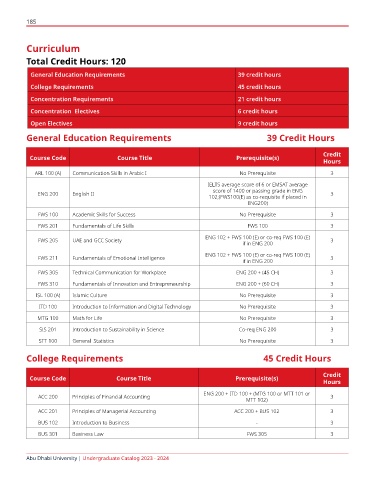Page 185 - Undergraduate Catalog 2024-25
P. 185
185
and to become professionals who will contribute to the needs, values, norms, abilities, and socioeconomic
socio-economic, cultural and urban development of the patterns that characterize different locations, cultures,
community on local, regional and global levels. and individuals;
4. Prepare a comprehensive program for an architectural
Program Objectives project, including assessment of client and user needs,
critical review of appropriate precedents, an inventory
The following program objectives are broad statements that of space requirements, an analysis of site conditions, a
describe the career and professional accomplishments, review of relevant laws and standards, and a definition
which should be achieved during the first several years of site selection and design assessment criteria;
following our students’ graduation. Overall, our graduates
are expected to: 5. Produce a comprehensive architectural project
based on a building program and site that includes
1. Demonstrate knowledge of the historical context, the the development of programmed spacing while
state-of-the-art, and emerging issues in the field of integrating structural and environmental systems,
architecture and its role in contemporary society; building envelope systems, life-safety provisions, and
the principles of sustainability;
2. Display a systems viewpoint, critical thinking, effective
communication and interpersonal skills, a spirit of 6. Select and apply construction materials, products,
curiosity, and conduct reflection in a professional and components, and building assemblies to prepare
ethical manner; technically precise drawings, outline specifications
3. Demonstrate critical reasoning, creative-thinking, and estimates of building costs, life-cycle cost, and
and essential skills to identify, formulate, and resolve construction costs for a proposed design;
architecture problems, and to create designs that
reflect aesthetic, functional, structural, economic, 7. Assess, select, and conceptually integrate different
environmental,
electro-mechanical
building
and
environmental, and social sensitivities;
structural systems into building design; and
4. Display broad intellectual training for success in
multidisciplinary professional practice as a team 8. Demonstrate an understanding of the legal aspects
member and also toward achieving leadership roles in and ethical issues of practice organization and
industry, government, and academia; and management as well as the role of professional
development, and the need to provide leadership in
5. Demonstrate commitment to life-long learning and the building design and construction process.
professional development, involvement in professional
activity and public service, and achievement of All program learning outcomes (PLOs) are designed to
ensure that they meet the appropriate level of rigor for the
professional licensure.
specific degree as per international criteria, and the PLOs
are aligned with, and mapped to, the UAE Qualifications
Program Learning Outcomes Framework (level 7 for a Bachelor’s degree).
The following program outcomes describe competencies ADU has established procedures by which all its courses
and skills that our students acquire by the time of must comply with a standard master syllabus. The master
graduation. Our graduates are expected to be able to: syllabus describes the course learning outcomes, links
the course learning outcomes to the program learning
1. Communicate effectively, orally, in writing as well outcomes, and demonstrates that the outcomes are
as graphically using manual techniques as well as consistent with the requirements of the UAE Qualifications
computers tools to generate, evaluate, develop and Framework for the level of the degree. In addition to this,
communicate ideas; the syllabus outlines all the important procedures and
materials that are used to achieve these learning outcomes.
2. Gather, assess, record, and apply relevant information It serves as a base for coordinating the teaching process,
and raise clear precise questions, interpret information, especially in multi-section and multi-instructor courses.
consider diverse points of view, reach well-reasoned
conclusions, and test them against relevant criteria;
3. Resolve the needs of the client, owner, and user, taking
into consideration the relationship between human
behavior and the physical environment and the diverse
Abu Dhabi University | Undergraduate Catalog 2024 - 2025

